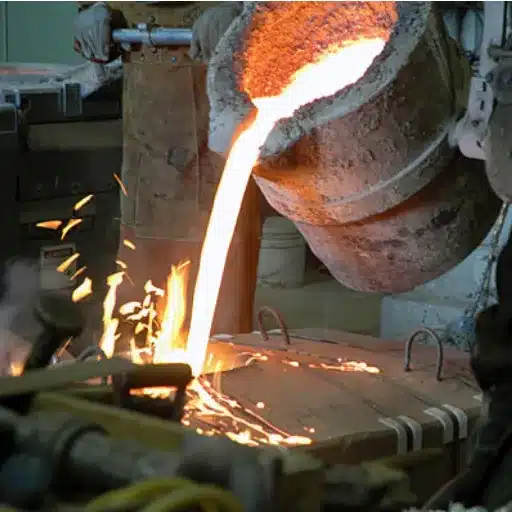Due to their resiliency, strength, and subsequent resistance to corrosion, welded pipes of stainless steel serve innumerable industries as both an integral and versatile component. These pipes are produced through the welding of steel strips or sheets, which results in strong, seamless structures that serve myriad applications. Stainless steel welded pipes serve their purpose in modern infrastructure and technology: construction and architecture, energy, transportation, and even the food processing industry. This article provides an overview of their characteristics, manufacturing processes, applications, and considerations for selecting the suitable type for particular requirements.
What is a stainless steel welded pipe?
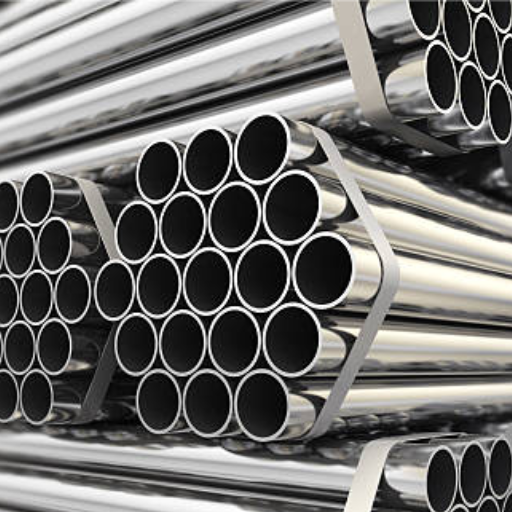
A welded pipe made of stainless steel is a tubular product with high resistance to corrosion, which is made by welding stainless steel sheets or strips into a continuous pipe. Such welded pipes are made with accurate joints and strong dimensional control, which allows their use in high-performance construction, petrochemical, and food processing applications.
How is a stainless steel welded pipe made?
The process of manufacturing the pipe is quite riveting and requires a certain degree of precision in every step to achieve the required level of quality and strength. Here is what is usually done in these cases:
- Selection of Raw Material: First comes the selection of the high-grade stainless steel sheets or strips. The selection of material is important since it affects the strength, corrosion resistance, and performance of the pipe.
- Cutting the Material: The Pipes are built up on the basis of specific requirements of individual clients, thus the width of the stainless steel sheets or strips is cut to the required size.
- Forming the Pipe Shape: The next step involves passing the cut material through several rollers, which slowly shape it into a cylindrical form. This step is referred to as roll forming.
- Welding the Edges: The material is first formed into the shape of a tube, and later o n the edges are welded together. This can easily be done through either the high-frequency welding process or by using TIG (Tungsten Inert Gas) welding. In all cases, the weld will be strong and precise.
- Heat Treatment: Also known as annealing, the heat treatment process takes place after the pipe is welded. A benefit of this step is that ductility is enhanced, and other stresses in the area of the weld are removed.
- Polishing or Surface Finishing: Should the pipeline require smoother surfaces or greater resistance to corrosion, polishing or other forms of treatment are done as per standards and requirements.
- Sizing and Cutting: After surface treatment, the pipe is subjected to further processing to achieve measurable micrometric accuracy in dimension by using cutting and sizing rollers. Each rod is cut to pre-defined lengths using advanced cutting tools for precise lengths.
- Testing and Quality Control: Afterwards, thorough testing is conducted, which includes non-destructive ultrasonic or x-ray tests to ensure complete structural soundness. All welded portions in addition to the entire length of the pipeline are checked for wall thickness, welds, and surface finish as defined in the scope checklist.
What are the applications of stainless steel welded pipes?
The fabrication of pipelines of stainless steel has become prominent in various sectors due to its resistance to corrosion, high strength, and long life. It is commonly used in construction for structural support, transportation of corrosive fluids in the oil and gas industry, piping food and beverage processing for sanitary purposes, and in the automotive and aerospace industries for exhaust systems and precision components. Furthermore, it is also crude in systems for the treatment of water, power generation, and is used for decorative purposes in architecture. The benefits offered make these pipes critical in the industrial and commercial domains, too.
Why choose high-quality stainless steel for welded pipes?
Selecting high-grade stainless steel for welded pipes is of utmost importance when it comes to dealing with factors like durability, performance, and long-term efficiency. High-grade stainless steel increases productivity in harsher environments as it has a superior resistance to corrosion, extreme temperatures, and even extreme pressure. Furthermore, it is light-weight, which means it ensures minimal maintenance without undermining structural strength while delivering a professional, aesthetically appealing finish. When priorities are set for reliability and sustainability for welded pipes, high-grade stainless steel proves to be the most effective and economical solution.
How does a stainless steel welded pipe differ from a seamless pipe?
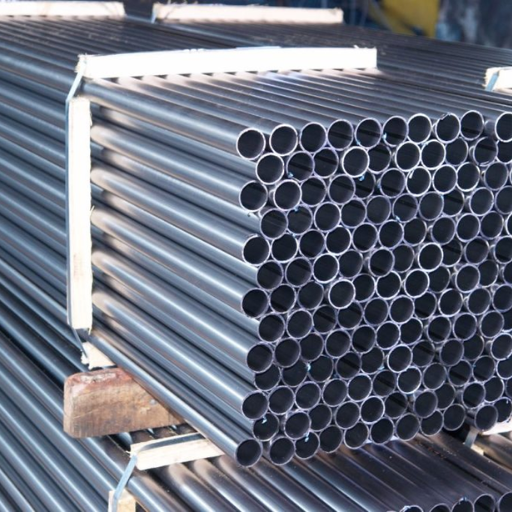
The production of stainless steel welded pipes involves the welding of a flat steel strip or plate into a cylinder shape, which leaves a longitudinal seam on the pipe’s exterior surface. On the other hand, seamless pipes are made by extrusion or rotary piercing, which produces a pipe devoid of any welds or seams. Generally, welded pipes are more affordable and yield greater accuracy in wall thickness due to controlled processes. In contrast, the production of seamless pipes is stronger in nature, best for high-pressure situations where strength is needed most. Each has advantages and disadvantages, so the decision rests on the unique features of the use case, such as needs for pressure, cost, and durability.
What is the difference between seamless and welded pipes?
the seamless and welded pipes differ mainly in their modes of fabrication and their applicable standards. Unlike welded pipes, seamless pipes do not contain joints or welds, which allows for easier manufacturing. This lack of seams also contributes to enhanced strength and greater pressure resistance, making seamless pipes an excellent choice for critical applications within the oil and gas sectors. In contrast, welded pipes are produced using the rolling and welding method. The use of this technique makes welded pipes more cost-effective and allows for better control of the dimensions. While seamless pipes can withstand greater loads due to their structural integrity, cost-effective precision is often sought in welded pipes, which makes them the ideal choice for less demanding applications.
Which is better for corrosion resistance: seamless or welded?
Seamless pipes typically possess corrosion resistance benefits over welded pipes. This is due to the welded seam on the latter which is a weak point susceptible to corrosion in harsh corrosive environments. However, the overall corrosion resisting ability also relies on the material composition and treatment of the pipe; hence, both types can perform optimally if chosen and maintained properly for the specific application.
When to choose seamless stainless steel pipe?
Select welded stainless steel pipes only when maintenance is of utmost importance to you. Based on research, I have found that seamless pipes are the best suited for high-pressure and temperature applications precisely because of their construction, or lack thereof. Unlike other pipes, they have no weld seam, which is a point of failure for many other pipes. This makes them perfect for crucial industries like oil, gas, chemical processing, or even power generation industries, where dependability is a must. For any projects in demanding operating climates, I suggest seamless pipes due to their unparalleled level of uniformity and structure, which guarantees distinct performance and durability.
What are the specifications for welded stainless steel pipe?
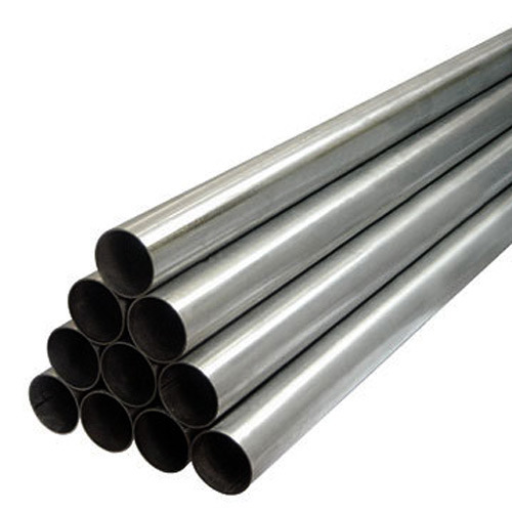
The process for making welded stainless steel pipes involves rolling a stainless steel plate or strip into a tube and welding the seam closed. The grade and application of the pipe determine their specifications, which typically include standards like ASTM A312, A358, or A778. Examples of commonly used grades include 304, 316, as well as their low-carbon counterparts 304L and 316L, which have superior corrosion resistance and weldability. Welded pipes have suitable dimensions like outer diameter and wall thickness that meet industry standards and are manufactured in schedules ranging from SCH 5 to SCH 80. Welded pipes are most appropriate for applications that require cost-efficient solutions with mild durability, especially in less demanding conditions.
Understanding ASTM standards for stainless steel pipe
the ASTM standards on stainless steel pipes and why they are essential. The American Society for Testing and Materials (ASTM) establishes important guidelines which make certain that stainless steel pipes maintain consistent levels of quality, safety, and operational efficiency. Let me explain what you should know regarding these standards and their application to welded stainless steel pipes.
- Material Grades: ASTM assigns specific common grades and defines the chemical composition and mechanical properties of stainless steel. Common grades include 304, 316, and 321. An example of one of the most recognized standards is ASTM A312, which covers seamless and welded stainless steel pipes of specific grades possessing high temperature and corrosive resistance.
- Dimensions and Tolerances: ASTM standards delineate with accuracy the wall thickness, diameter, and tolerances of the pipe. Preliminary of permissive tolerances is governed by standards, like ASTM A999, which deals with uniformity in the pipe length, roundness, and straightness which is essential for intergrated system designs.
- Testing Requirements: For every specification under ASTM requirements, each pipe needs to go through a minimum standard of tests. Hydrostatic pressure testing, nondestructive evaluation such as ultrasonic testing, and mechanical procedures like tensile strength and hardness checks are some examples. Other than those explained above, ASTM has set requirements for welded pipes regarding the strength of the weld seam.
- Corrosion Resistance: As per the set application, ASTM standards consider corrosion resistance under different conditions. Stainless steel grade 316, for instance, has higher chromium and nickel content, which makes it more resistant to chemical and marine corrosion.
- Marking and Certification: Every manufactured stainless steel pipe under ASTM guidelines is marked with the relevant information of grade, size, standard, heat number, and designated manufacturer. This guarantees traceability and enhances the buyer’s confidence in the quality of the material.
- Welded Pipe-Specific Criteria: For welded stainless steel pipes, greater emphasis is put on weld quality. ASTM requires the removal of weld bead irregularities and the application of post-weld heat treatment to restore the corrosion-resistant properties, ensuring durability.
Observing ASTM Standards is crucial as they ensure repeatable quality, safety, and reliability in sectors such as oil and gas, food processing, construction, and many others. When choosing or utilizing welded stainless steel pipes, proper compliance with these standards should always be verified to ensure the pipes meet the standards for your project needs. If you would like to clarify any other questions regarding any other parameters, don’t hesitate to ask—I’m on your side!
What does ASTM A312 specify?
The American Society for Testing and Materials (ASTM) A312 sets the specification for the seamless, welded, and heavy wall stainless steel pipes for high temperature and general corrosive services. These pipes are used widely in oil and gas, chemical processing, and power generation industries because of the relevant durability and overwhelming resistance to stainless steel. ASTM A312 describes the essential components, such as the material composition, methods of construction, and mechanical properties, so that the pipes are guaranteed to give the necessary performance and safety.
How do 304 and 316 grades compare?
The major difference in 304 and 316 stainless steel lies in the composition of the materials and how corrosion resistant they are. Grade 316 has molybdenum, which protects against pitting and crevice corrosion in harsh chloride environments, like the ones in maritime and chemical operations. While 304 is much cheaper and easier to find, as well as being used for simple tasks, 316 is used in harsher environments that require greater resilience and greater resistance to corrosion.
What are the advantages of welded stainless steel pipes?
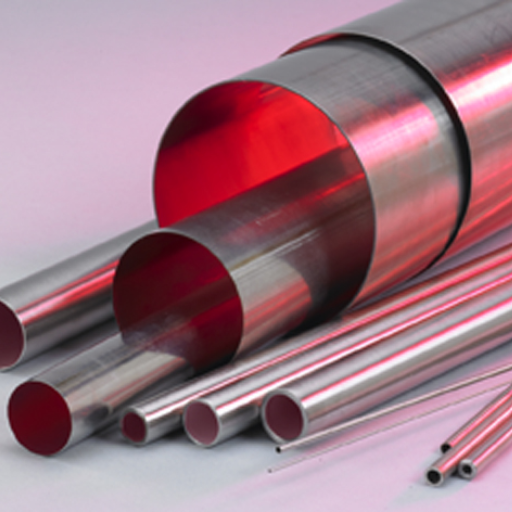
Affordable, versatile, and easy-to-fabricate stainless welded steel pipes come with many benefits. the streamlined production processes make these pipes more affordable in comparison to seamless pipes. Furthermore, these pipes are exceptionally strong and durable, fulfilling the requirements of numerous industries such as construction and chemical processing. Welded pipes can also be fabricated into many different shapes and sizes, which increases adaptability for specific applications. Their smooth surfaces allow for high corrosion resistance while also enabling long-term performance in challenging environments.
Benefits of using welded pipes in the oil and gas industry
There are numerous advantages of welded pipes in the oil and gas business, especially in terms of cost effectiveness due to simpler manufacturing processes and their availability in various sizes. They have high strength and superb corrosion resistance, which enables them to withstand the transportation of oil, gas, and other fluids in harsh environments. Moreover, welded pipes guarantee dependability in high-pressure environments and can be customized to fulfill specific operational standards, improving efficiency and safety.
Why is high-temperature application suitable for these pipes?
The pipes are ideal for high-temperature applications due to their material properties. In my case, the exact welding method applied in the fabrication guarantees self-sufficiency and resilience even under severe thermal stress. Their strength of thermal expansion or deformation makes them dependable for industries that consistently need high-performance machines in highly demanding temperatures. Their remarkable ability to withstand corrosion also makes them more advantageous by reducing the chances of material deterioration over time.
How to ensure quality stainless steel welded pipe?
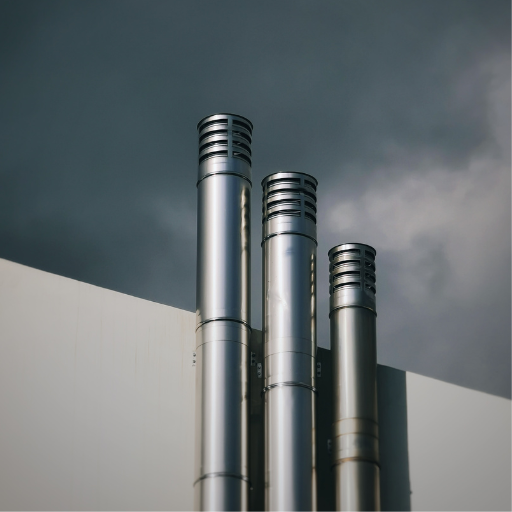
To maintain the structural integrity of a stainless steel welded pipe, the following tips should be followed. As a first step, acquire components of the highest grade that are of global and industrial standards. Next, carry out smooth automatic welding, careful seam formation, and defect removal at all levels of manufacturing. Thorough inspection must also be conducted, such as check testing, visual checking, and all nondestructive means to measure for flaws, discontinuities, or defects. Final steps must include meeting all polishing and surface standards to increase the stainless steel pipes’ resistance against being eroded and lasting longer in rotations for the requirements of the product.
What to look for in a quality stainless steel welded pipe?
In my evaluation of a stainless steel welded pipe, the first thing I pay attention to is the weld seam. A good pipe will feature a seamless weld with no apparent indentations or inconsistencies. After that, I look at whether the wall dimensions were precise, uniform, and accurate regarding the set standards. Surface finishing also matters, whether it is polishing or coating, as I check that it does not weaken the stainless steel grade’s resistance to corrosion. Lastly, I look at the level of quality control exercised on the pipes, particularly nondestructive testing, as this helps ascertain their reliability and longevity under strenuous conditions.
How are welded steel pipe fittings inspected?
In carrying out my inspection of welded steel pipe fittings, I use a comprehensive step-by-step approach to guarantee that each fitting adheres to the necessary regulations concerning safety and functionality. This is my methodology:
- Visual Inspection: The initial phase includes a perceptive examination. I search for surface imperfections including weld porosity, cracking, and excessive weld splatter. A good weld in itself signifies a well-done job.
- Dimensional Checks: Further, I check the fitting’s dimensions as it pertains to the prescribed tolerances, which include outer diameter, wall thickness, and general geometric configuration to ascertain that it can be installed without any problems.
- Weld Quality Assessment: The nature of the weld is of paramount importance. I analyze whether appropriate penetration, uniformity, and sufficient reinforcement have been applied to the weld. Poor welds will most certainly result in failure due to high pressure.
- Non-Destructive Testing (NDT): These are some of the methods used to find hidden flaws in the material using ultrasonic and radiographic testing, as well as magnetic particle inspection. With these tests, it is possible to guarantee that no hidden defects exist that could undermine the fitting’s integrity.
- Pressure Testing: For my particular use, I either perform hydrostatic or pneumatic pressure tests to verify the fitting can withstand the required operating pressures. This step is absolutely critical in high pressure situations or for systems that are deemed to be critical.
- Material Verification: I check the material certification and, if necessary, I perform additional tests like chemical composition analysis, as well as hardness testing. Doing these checks makes sure the material grade will be as specified in the requirements accompanying the purchase order. In this case, the merit will be durability and strength.
- Surface Treatment Check: In the last step, I verify that all the requisite standards for the surface treatment of the fitting are met. Garvanization, painting and other types of coatings are done and this ensures the fitting will be protected from corrosion.
Careful step-by-step analysis of these parameters facilitates accurate evaluation of the quality and reliability of welded steel pipe fittings, confirming their readiness for challenging applications.
Reference
- All You Need to Know About Stainless Steel Welded Pipe
- The Ultimate Guide to Welded Stainless Steel Pipe
- Stainless Steel Welded Pipe Market to Reach USD 8.9 Billion
Frequently Asked Questions (FAQs)
Q: What is a stainless steel welded pipe?
A: A stainless steel welded pipe is made by welding a steel or steel strip to form a tube. It is a widely used stainless steel product in various industrial applications, offering a range of specifications and sizes.
Q: How does stainless steel welded pipe differ from seamless steel pipe?
A: Stainless steel welded pipe is manufactured by welding steel or steel strips, while seamless steel pipe is made without welding, typically through an extrusion process. Seamless steel pipes have no joints, making them suitable for high-pressure applications.
Q: What are the common alloys used in stainless steel welded pipes?
A: Common alloys used include austenitic stainless steel grades like 304 and 316L. These alloys provide excellent corrosion resistance and are used in a variety of applications.
Q: What are the advantages of using stainless steel welded pipes in industrial applications?
A: Stainless steel welded pipes offer excellent corrosion resistance, durability, and a wide range of applications. They are also cost-effective compared to seamless pipes and can be produced in large diameters.
Q: In which applications are stainless steel welded pipes most commonly used?
A: Stainless steel welded pipes are used in piping systems, decorative pipes, and various industrial applications. They are suitable for transporting fluids and gases and are also used in structural applications.
Q: What is 316L stainless steel, and why is it commonly used?
A: 316L is a low-carbon version of 316 stainless steel, offering superior corrosion resistance, especially in chloride environments. It is widely used in marine and chemical processing applications.
Q: What are the manufacturing processes for stainless steel welded pipes?
A: Stainless steel welded pipes can be manufactured using processes like resistance welding or laser welding. These methods involve joining the edges of stainless steel plates or strips to form a pipe.
Q: How do welded pipe sizes vary?
A: Welded pipe sizes vary widely, allowing them to meet the needs of different applications. The size range includes small-diameter pipes for tubing to large-diameter pipes for pipeline construction.
Q: Are there any specific standards for stainless steel welded pipe products?
A: Yes, stainless steel welded pipe products are manufactured according to specific standards such as ASTM, ASME, and EN. These standards ensure quality, safety, and suitability for various applications.
Q: What is the role of stainless steel welded pipes in replacing other steel pipes?
A: Stainless steel welded pipes have been increasingly used to replace carbon steel and other types of pipes due to their superior corrosion resistance, lower maintenance costs, and longer lifespan in harsh environments.

